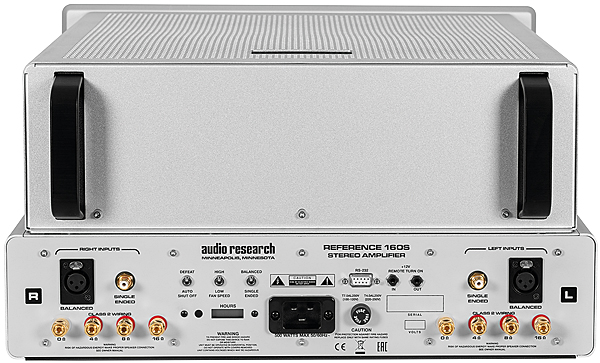
Audio Research Ref160s Tube Power Amplifier
03 March 2021
![]()
PRE/POWER AMPLIFIERS
Audio Research REF160S Tube Power Amplifier
Review: Ken Kessler, Lab: Paul Miller | Apr 28, 2020
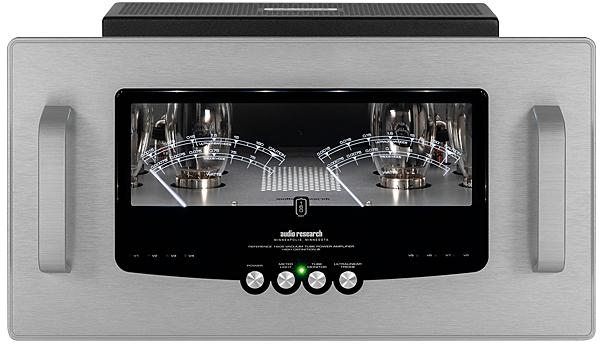
 The REF160M monoblocks were a radical change for the venerable Reference Series, and now they have been 'cut 'n pasted' into a single, spectacular stereo chassis
The REF160M monoblocks were a radical change for the venerable Reference Series, and now they have been 'cut 'n pasted' into a single, spectacular stereo chassis
This should have been the simplest, swiftest review for me to undertake: I would simply drop the stereo version of the Audio Research Reference 160M [HFN Aug '18] into my system in place of the Reference 75SE. Double the number of KT150s and double the power, a price tag of two quid shy of twenty grand, fond memories of the monoblocks still tugging at me after 18 months: the Audio Research Reference 160S should have been a doddle, easy to anticipate. But it wasn't.
It has been Audio Research's practice to deliver stereo versions of its monoblocks after a suitable passing of time. In theory, the differences should relate solely to general monoblock-vs-stereo amp arguments: total isolation of left-and-right channels and separate AC sources for both, versus shared elements in the stereo edition. But here it's not straightforward because the new model – hitherto called the REF160S – is almost too good.
Dandy Triode
At first glance, this looks to be exactly what a stereo version should be: same rating, but a single chassis and a massive cost saving – roughly 30%. Otherwise, it's the same in operation and practice, again with the pain of valve housekeeping reduced thanks to auto-bias and the delicious user option of switchable Ultralinear and Triode operation on the fly.
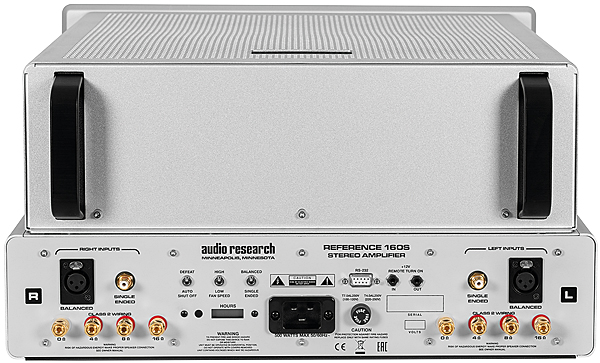
But this calls for a moment's digression, as I champion the KT150. Over the years, I have been drawn to a handful of output valves, including the KT77, 211, 845, and I am no more ashamed than those who worship the 300B triode. But just as the 6550/KT88 became the de facto tube for most makers, as did the EL34 decades before, the KT150 has become a modern classic. Moreover, Audio Research truly knows how to apply it – as I found when moving from the REF75 [HFN Nov '12] to REF75SE. With REF160M or S, we find it also makes a dandy triode.
As editor PM counselled me, 'Triode mode offers half the power and fractionally less distortion here, but how does it sound?'. Once again, I wish there was armchair remote selection available here, but I still found the choosing of Ultralinear-vs-Triode to be source-, genre-, system- and political-bias-dependent, but that's simplifying it too much. As I said, my initial thoughts that this review would prove to be a doddle were swiftly crushed.
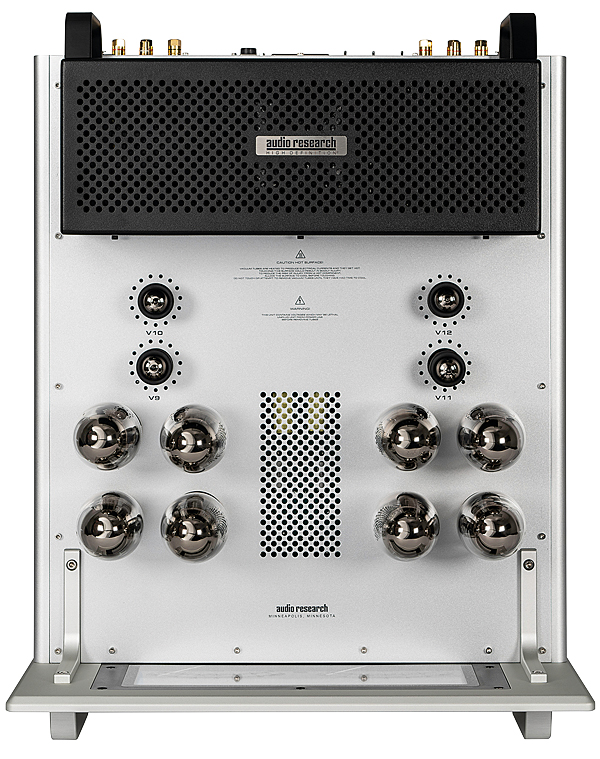
It was gonna be a breeze – dig out my notes for the 160M review, same music. But in the interim, I had changed from Wilson Yvettes [HFN Feb '17] to Sasha DAWs [HFN Mar '19], acquired the TechDAS Air Force III Premium turntable [HFN Jun '19] and changed all wiring to Transparent. So I had to approach this with fresh ears.
![]() Two Into One Will Go
Two Into One Will Go
Installation was utterly straightforward. The rear of the amp is fitted with stout 4mm binding posts with nominal 16, 8 and 4ohm taps and an array of toggles to select single-ended or balanced inputs, fan speed and auto-shut off. Tube hours are indicated on the back.
Initially, I didn't even bother to check whether I was in Triode or Ultralinear mode, the power differences between the two never an issue for me as I'm no headbanger. I couldn't wait to hear the thing but impatience is an ugly trait, and switch-on involved the usual waiting for the unit to settle down and come out of its mute condition. I was chomping at the bit. Those two minutes or so seemed an eternity...
It was worth it, for what issued forth was so extreme a jump in performance that I immediately thought about selling my wine cellar so I could acquire a REF160S of my own. As there had been so many changes to my system since I reviewed the monoblocks, I threw out the notion of using the same LPs and CDs in an attempt at repeating precisely the same test. Instead, I trusted my ears (and hundreds of hours with the rest of the system) to decipher the charms and merits of the REF160S. And it started with the bass.
![]()
PRE/POWER AMPLIFIERS
Anyone who's heard the remastered, 50th anniversary edition of The Beatles' Abbey Road [Apple 02508 00744] knows that opening track, 'Come Together', is an exercise in bass quality, extension and expressiveness. Again, without looking at the colour of the LED to tell me which mode I was in, I wallowed in lower octaves I have never heard from this album. I even dug out an original copy to determine how much of it was the amplifier and how much was the remastering.
Peerless Power
Suffice it to say, the REF160S amp will immediately gain recognition for obviating any arguments about solid-state versus valve bass. It was extended, taut and fast-sounding, but most of all it proved to be rich with detail in a way that elevates one's respect for Paul McCartney's playing to an even higher level. (Bass Player magazine places him No3 among the world's best.)
This amp creates a foundation for weighty material that I can only liken to moving from an 8in to a 12in woofer. And, that had nothing to do with power, because – once I had revelled in both versions – I checked the illumination to find I was in Triode mode. So I replayed both, this time in Ultralinear, and heard only a minuscule gain in impact and tautness.
Before passing judgement on one versus the other, I slipped ZZ Top's 'Gimme All Your Lovin'' [Goin' 50; Warner Brothers R2 591567] into my treasured Marantz CD12/DA12 CD player. It was the first time I had the strength to switch it on after the passing of Marantz's brand ambassador, Ken Ishiwata, knowing that he'd have preferred Julie London, but would have gotten a kick out of this peerless power trio. I wanted to hear that track both for the utter perfection of its percussive opening, and the raunch of Billy Gibbons' guitar playing.
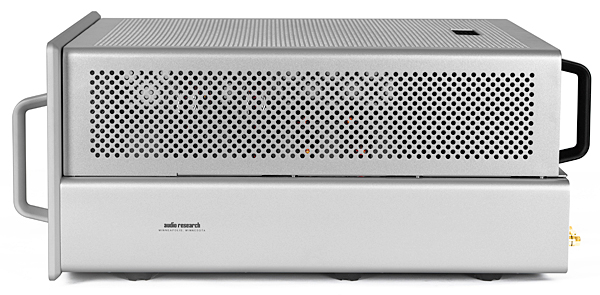
Blow me down, for while I expected the Triode setting to be flabbier, the Ultralinear punchier, the difference was so subtle that it became a matter of personal preference. For me, the midband is king/queen, the extreme treble the trickiest bit if sibilance or edginess is to be avoided, and bass is something that usually reminds me of Goldilocks' porridge choices. And so it was here – the Triode setting favoured the guitar and vocals, while Ultralinear suggested an erg or two more power. But this needs clarification, because we are talking minute differences so barely significant that they almost gave me a headache trying to identify their strengths and weaknesses.
This is, I hasten to emphasise, not to suggest they are inconsequential. I prefer to stress vehemently that the two offer preferential choices, not absolutes. In practice as most bombastic music will mask the variances, personal taste will always win (the Triode mode is generally sweeter and less aggressive), one's partnering speakers will play a part, and you'll probably hear wider variations between, say, a standard LP and a 180g pressing.
Blasts Of Brass
Why, then, am I going on about it? Simply put, anyone investing this kind of money and commitment to a piece of hi-fi equipment – no, make that anyone who cares enough about sound to read this magazine, regardless of their fiscal standing – will deem this important. But I do not want to mislead because, whichever setting you use, the REF160S belongs in that category of amplifier that defines the uppermost calibre of performance. And it proved to be breathtaking when fed half-track, 15ips tapes on a recently-refurbished Otari 5050 reel-to-reel.
Chasing the Dragon's Big Band Spectacular [no catalogue number] featuring the Syd Lawrence Orchestra is one of the most natural, powerful recordings I've heard in years, with transient attack, blasts of brass and eye-watering dynamic swings that elevate it to reference standard levels – it's the kind of album that shows off a system the way our 1950s forebears used steam railway recordings.
Again, the choice of mode was down to user preference (a whisper more air and scale in Triode, a tad more incisive punch in Ultralinear) but the overall sensation – and ultimately that's what matters most – was one of an iron fist in a silken glove. The sheer scale and presence of a big band is something to behold, reason enough to account for the preponderance of LPs and tapes produced by the genre in the early days of stereo, and the REF160S delivered it with the needles rarely passing the midpoint, unless a crescendo so demanded it.
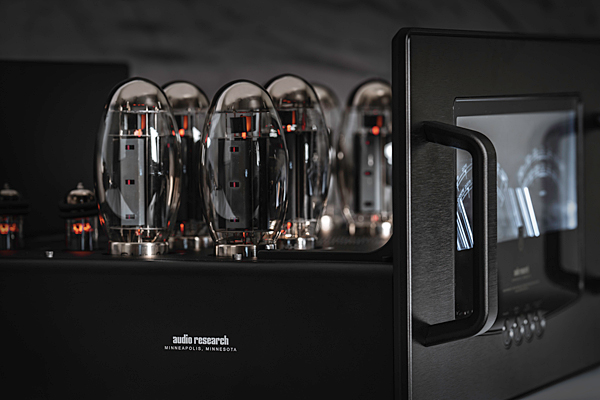
More telling were the massed voices in Mahalia Jackson's version of 'Go Tell It On The Mountain' from Home For Christmas [Columbia House DT3 5610, 3¾ips tape], which were spread across the room in a proscenium arch of clearly-defined shape and dimensions. Vocal textures? As lifelike as I hoped. Handily, the next track was the acoustic guitar version of 'The First Noel' by Charlie Byrd, and it was this solo instrument that revealed even more about both the amplifier in general and its choice of modes in particular. Simply put: it shimmered. In every way.
Hi-Fi News Verdict
Even if I didn't have to think about cost/space considerations, Audio Research's Reference 160S has shot to the top of my Fantasy Sound System League Table. It does everything I want, with style, grace and – like a pussy cat suddenly discovering its inner lion – power to spare. It's not often I feel a gnawing tug when a review unit is collected, but waving goodbye to the REF160S was a wrench I didn't anticipate.
![]()
PRE/POWER AMPLIFIERS
New Generation
ARC's REF160M monoblocks [HFN Aug '18] might have shared the same prefix as earlier classics including the REF75 [HFN Nov '12], REF150 [HFN Feb '12] and REF150SE [HFN Dec '15] but its design and technical performance was clearly influenced by more recent models, including the KT150-equipped GS150 [HFN Jan '15] and inaugural autobias model, the VT80 [HFN Oct '17]. Warren Gehl, responsible for the amplifier's 'voicing', together with the late Chief Engineer Ward Feibiger, navigated the move to the beefy KT150 output tubes that are now seemingly de rigueur for all 100W+ valve amps with audiophile pretension.
Noise aside, the new REF160S really does offer everything that the REF160M monoblocks deliver but at two-thirds the price. Moreover, the pair of large power meters are now more accurate than those we tested on the REF160M. Perhaps Audio Research reads HFN's Lab Reports after all, because where the 160M's meter read 0.015W for a true 1W/8ohm (8ohm tap) output, and 10W read 0.15W, and 100W read 1.5W on the 'Ultralinear' scale, the REF160S's meters are calibrated to read 1.5W for a 2.2W/8ohm output and 15W for 12W/8ohm output. So these meters are no longer purely decorative!
![]()
PRE/POWER AMPLIFIERS
Lab Report
With differences between the original REF160M [HFN Aug '18] and this stereo version boiling down to necessary changes in PCB layout, one less filter capacitor and positioning of two fans under the chassis, comparisons are intriguing. Is the REF160S really equivalent to two REF160Ms? Let's start by looking at power output: both amps have the same 140W rating and this is met into 8 and 4ohm with 2x169W (160S) and 165W (160M) being delivered at up to 1% THD via the 8ohm and 4ohm taps. This improves very slightly under dynamic conditions to 180W into 8/4ohm with 215W/2ohm (<2% THD) and 185W/1ohm (<3% THD) all in the REF160S's 'Ultralinear' configuration [see Graph 1, below] and just a few watts ahead of the REF160M. In 'Triode' mode the output from both 160S and 160M falls to 82W/8ohm and 85W/4ohm with a very marginal reduction in distortion at the frequency extremes [black vs. green trace, Graph 2 below].
The 'shaped' frequency response with its mild +0.1dB bass boost from 300Hz down to 10Hz allied to a gentle mid/presence roll-off of –0.2dB/5kHz is retained in the REF160S but the HF roll-off is less exaggerated. Here it is just –0.25dB/20kHz down to –4.0dB/100kHz, as opposed to –0.7dB/20kHz and –7.1dB/100kHz in the REF160M (Ultralinear mode, 1W/8ohm), although the 0.7-1.5ohm output impedance (20Hz-20kHz) is unchanged via the 8ohm tap. Once again, distortion increases gently with output level from 0.05%/1W to 0.15%/10W and 0.6%/100W (all 1kHz/8ohm). Versus frequency, the minimum is at 40Hz (0.05% at 10W), increasing to 0.22%/20kHz. Noise is very low, but not as low as in the REF160M which achieved an A-wtd S/N ratio of 100.5dB (re. 0dBW). For the REF160S, the figure is 94dB. PM
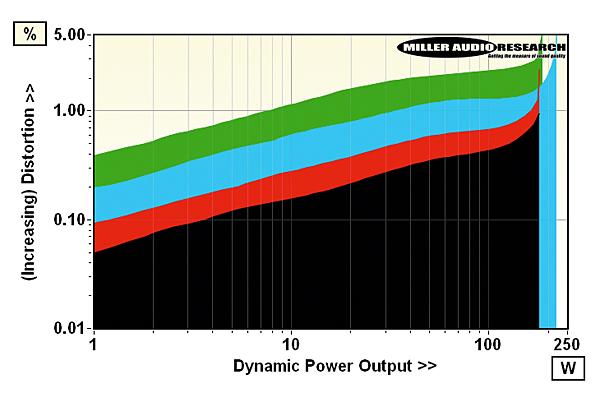
Dynamic power output versus distortion into 8ohm (black trace), 4ohm (red), 2ohm (blue) and 1ohm (green) speaker loads. Max. current is 13.6A
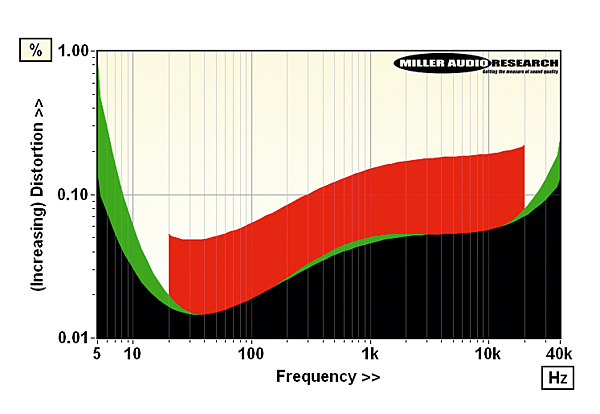
Distortion vs. frequency (20Hz-20kHz, 10W, red; 5Hz-40kHz, 1W Ultralinear, green; Triode, black)
| Power output (<1% THD, 8/4ohm) | 169W / 170W |
| Dynamic power (<5% THD, 8/4/2/1ohm) | 180W / 181W / 215W / 185W |
| Output impedance (20Hz–20kHz) | 0.687–1.48ohm |
| Freq. response (20Hz–20kHz/100kHz) | +0.1dB to –0.25dB/–4.0dB |
| Input sensitivity (for 0dBW/140W) | 179mV / 2105mV (balanced) |
| A-wtd S/N ratio (re. 0dBW/140W) | 93.6dB / 115.1dB |
| Distortion (20Hz-20kHz, 10W/8ohm) | 0.06–0.19% |
| Power consumption (Idle/Rated o/p) | 420W / 740W |
| Dimensions (WHD) / Weight | 483x260x546mm / 45kg |

